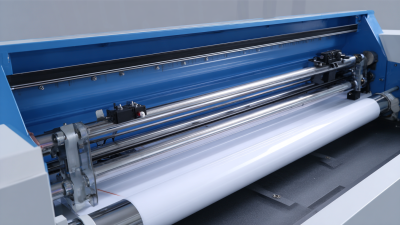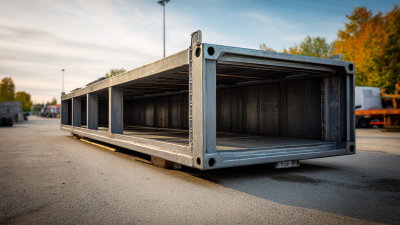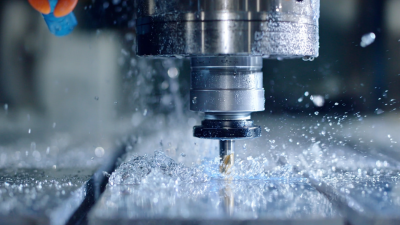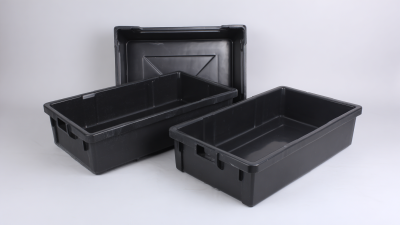Understanding the Process of Vacuum Forming Plastic: A Beginner's Guide
Vacuum forming plastic is a widely used manufacturing process that allows for the creation of custom shapes and parts from plastic materials. This beginner's guide aims to demystify the intricacies of vacuum forming, providing essential insights into how the process works, its applications, and the materials involved. Whether you're an aspiring hobbyist looking to create unique designs or a professional seeking efficient production methods, understanding vacuum forming plastic is crucial.

In this guide, we'll explore the fundamental steps in the vacuum forming process, the types of plastics suitable for forming, and the solutions it offers for various projects. By the end, you'll have a solid foundation to begin your journey in the exciting world of vacuum forming and discover how this versatile technique can meet your creative and industrial needs.
Types of Vacuum Forming Plastics: A Comprehensive Overview
 Vacuum forming is a popular manufacturing process for creating plastic products, and understanding the types of plastics used can significantly enhance your project outcomes. Commonly, thermoplastics like ABS, polystyrene, and polycarbonate are preferred due to their versatility and ease of shaping. ABS, for instance, is renowned for its toughness and can be found in various applications, from everyday household items to more robust products. Its smooth finish makes it ideal for visible components in consumer goods.
Vacuum forming is a popular manufacturing process for creating plastic products, and understanding the types of plastics used can significantly enhance your project outcomes. Commonly, thermoplastics like ABS, polystyrene, and polycarbonate are preferred due to their versatility and ease of shaping. ABS, for instance, is renowned for its toughness and can be found in various applications, from everyday household items to more robust products. Its smooth finish makes it ideal for visible components in consumer goods.
Another prevalent type is polystyrene, known for its lightweight and cost-effectiveness. It is often used in packaging solutions and disposable items. For applications requiring higher impact resistance and clarity, polycarbonate is an excellent choice. Its durability and ability to withstand extreme conditions make it suitable for protective equipment and high-performance components. Understanding these materials helps beginners make informed choices that align their project needs with the properties of each plastic type, ensuring optimal results in vacuum forming endeavors.
Key Factors in Choosing the Right Plastic for Vacuum Forming
When it comes to vacuum forming plastic, choosing the right material is crucial for achieving the desired results. The plastic's flexibility, strength, and temperature resistance can significantly influence both the molding process and the final product's performance. Common materials for vacuum forming include polystyrene, polycarbonate, and ABS, each offering unique properties suitable for different applications.
Tip 1: Consider the application of your final product when selecting plastic. For instance, if your product requires high impact resistance, polycarbonate may be the best choice. Alternatively, if cost-effectiveness is a priority and you need lightweight options, polystyrene might be more appropriate.
The thickness of the material also plays an essential role in the vacuum forming process. Thicker sheets can provide more durability but may require more energy to heat and form, while thinner sheets can be easier to work with but may lack strength.
Tip 2: Always test your selected material to ensure it meets your project's requirements. Conduct sample runs to identify any potential issues during the forming process, such as warping or improper sealing. This will help you avoid costly mistakes and achieve optimal results.
Comparing Vacuum Forming with Other Plastic Molding Processes
Vacuum forming is a popular plastic molding technique that stands out for its simplicity and efficiency, particularly when compared to other methods such as injection molding and thermoforming. According to a report by Grand View Research, the global plastic molding market was valued at approximately $320 billion in 2022 and continues to grow as industries seek cost-effective manufacturing solutions. Vacuum forming allows for the rapid production of lightweight plastic parts, making it a favored choice among small to medium-sized enterprises.

When comparing vacuum forming with injection molding, the former often requires significantly lower upfront costs and faster turnaround times. Injection molding is ideal for high-volume production but necessitates expensive mold creation, making it less economical for small batch runs. A study from the Society of Plastics Engineers indicates that vacuum forming can be up to 50% more cost-effective for low-volume orders, while providing sufficient detail and finishes. This advantage opens opportunities for industries such as consumer goods, automotive, and even medical devices, where customized plastic parts are frequently needed. The flexibility in design and material choice enhances its appeal, especially in sectors that require rapid prototyping.
Advantages and Limitations of Vacuum Forming for Beginners
Vacuum forming is a popular method for shaping plastic sheets into various forms, making it a go-to choice for beginners in the field of manufacturing and prototyping. One of the main advantages of vacuum forming is its simplicity and cost-effectiveness. The process requires fewer specialized tools and machinery compared to other forming techniques like injection molding, making it accessible for small businesses and hobbyists. Additionally, vacuum forming can produce large parts quickly, which is particularly beneficial for creating prototypes or low-volume production runs.
However, while vacuum forming has its perks, there are limitations that beginners should consider. One major drawback is that the level of detail achievable in the final product is often less compared to methods like injection molding. Intricate designs might not come out as clearly, and thin areas of material can lead to warping or structural weaknesses. Furthermore, vacuum forming is typically limited to thermoplastic materials, which may not suit all applications. Understanding these advantages and limitations can help beginners make informed decisions and set realistic expectations when venturing into the exciting world of vacuum forming.
Understanding the Process of Vacuum Forming Plastic: Key Advantages and Limitations
Cost Analysis: Vacuum Forming vs. Other Plastic Manufacturing Methods
When comparing vacuum forming with other plastic manufacturing methods, cost efficiency stands out as a critical factor for many businesses. According to a report by the Freedonia Group, the overall cost of vacuum forming can be significantly lower than injection molding and rotational molding, especially for low to medium production runs. The equipment involved in vacuum forming often has a lower initial investment, with setups ranging from $10,000 to $50,000, compared to the $50,000 to over $100,000 typically associated with injection molding machines.
Labor costs also play a significant role in the cost analysis. A study from IndustryWeek highlights that vacuum forming operations require less sophisticated labor skillsets, resulting in potentially lower labor costs. With a typical production cycle for vacuum forming taking only minutes, production efficiency improves, allowing businesses to meet demand quickly without incurring escalating costs. Overall, these factors position vacuum forming as a remarkably cost-effective choice for businesses looking to produce plastic components while maintaining quality and reducing wastage.
Related Posts
-

How to Choose the Best Vacuum Forming Machine for Your Business Needs
-

Exploring Innovative Alternatives to Traditional Vacuum Molding Machine Solutions
-

Transforming Efficiency in 2025 with the Best Large Drain Pan Innovation and Its Benefits
-

Exploring the Future of CNC Machines in 2025 and Their Unmatched Advantages for Global Buyers
-

10 Essential Tips for Sourcing the Best Plastic Drip Tray for Your Business Needs
-

Unmatched Quality in Plastic Spill Trays from China Leading the Global Market